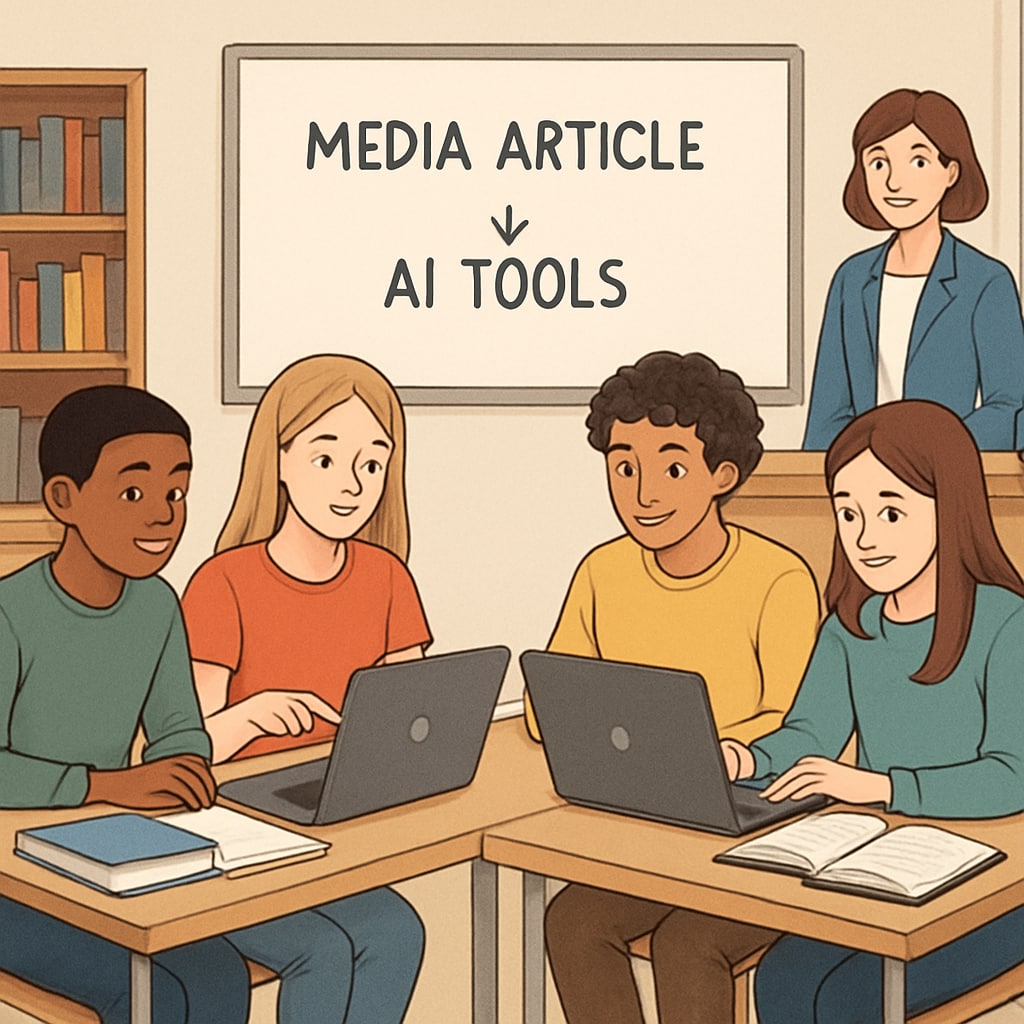In the digital age, equipping students with strong media literacy and critical thinking skills is essential for navigating the overwhelming amount of information available online. “AI writing prompts, media literacy, teaching resources” are reshaping educational practices by providing innovative solutions for educators. This article explores how AI tools can enhance these skills in high school students, offering free role-based AI writing prompts to support teachers in grades 9–12.
How AI Tools Revolutionize Media Literacy Education
Media literacy involves understanding, analyzing, and creating media content responsibly. With the rise of AI, educators now have access to powerful tools that not only simplify this process but also make it engaging for students. For example, AI-powered platforms can analyze news articles for bias, generate creative writing ideas, and simulate media production roles for students to learn in a hands-on environment.
- Bias Detection: AI can evaluate texts for political or emotional bias, teaching students to recognize and question the intent behind various forms of media.
- Interactive Role-Playing: Role-based AI writing prompts allow students to assume different perspectives—such as journalists, advertisers, or critics—giving them real-world insights into media creation and consumption.
- Content Creation: AI tools can assist students in producing blogs, videos, or articles, helping them understand the ethical and practical aspects of media production.

Free Role-Based AI Writing Prompts for Critical Thinking
Critical thinking is closely tied to media literacy, as students must evaluate the credibility and relevance of information. AI-enhanced resources, such as role-based writing prompts, are an excellent way to foster these skills. These prompts encourage students to think creatively and critically while engaging with real-world scenarios. For instance:
- Scenario Analysis: “Write an article as a journalist covering a controversial topic. Use AI to identify potential bias in your writing.”
- Ethical Debate: “As an advertiser, craft a persuasive ad for a product. Then, analyze the ethical implications of your strategies using AI tools.”
- Fact-Checking Exercise: “Use AI to verify the accuracy of claims in a viral social media post. Write a report on your findings.”
By integrating these prompts into classroom activities, teachers can create a dynamic learning environment that emphasizes both creativity and analytical rigor.

Why AI is a Game-Changer for Education
AI tools not only enhance learning outcomes but also prepare students for future careers in a tech-driven world. By using AI, educators can personalize lessons based on individual student needs, automate repetitive tasks, and introduce cutting-edge technology into the curriculum.
Moreover, AI fosters collaboration and engagement among students. For example, group projects involving AI-powered media analysis or content creation encourage teamwork and communication skills. As a result, students gain practical experience while developing critical competencies.
To learn more about media literacy, visit Media Literacy on Wikipedia. For insights into AI’s role in education, explore Artificial Intelligence on Britannica.
Readability guidance: This article uses short paragraphs, clear transitions, and bullet points to ensure accessibility. It avoids complex jargon, making it suitable for educators and students alike.


